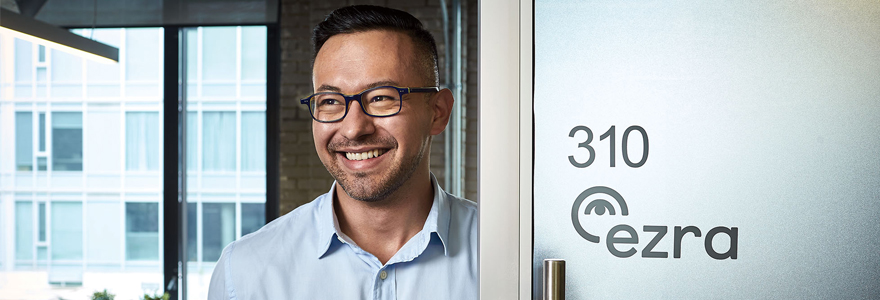Al Research: Music to his Ears
Diego Cantor finds harmony in his life by embracing both of his passions – music and research
By Jennifer Parraga, BA'93
“I believe in the power of a creative mind. When we allow ourselves to see and understand the world in different ways, we can find unexpected and interesting solutions to common problems.”
—Diego Cantor, PhD’15Diego Cantor, PhD’15, has long been curious about the brain and the fascinating balance of creativity and structure that the two hemispheres control.
“I believe in the power of a creative mind. When we allow ourselves to see and understand the world in different ways, we can find unexpected and interesting solutions to common problems,” he said. “On the other hand, our capacity for rational thinking enables us to share ideas and work together.”
Cantor was born into a musical family in Bogotá, Colombia. The eldest of three brothers, he spent much of his youth playing different instruments and performing with his family music ensemble.
While
A few years later, Cantor found himself back in school to pursue graduate training and satisfy his interests in biomedical research. An opportunity for an internship with the Commonwealth Scientific and Industrial Research Organisation in Brisbane, Australia came along and allowed Cantor to work on brain imaging.
His initial research was focused on Alzheimer’s disease using voxel-based morphometry, a computational approach to neuroanatomy that measures differences in local concentrations of brain tissue.
“The idea was to take a number of images of healthy brains and compare them to brains at different stages of dementia – to compare the images pixel by pixel and come out with a map of the brain so you can begin to understand what parts of the brain are affected,” he said.
It was this work which led him to Terry Peters,
“The years that I spent at Western were really some of the best of my life,” said Cantor. “Terry offered a training environment that provided autonomy, opportunity and that challenged me to become a better researcher.”
While at Robarts, Cantor’s research transitioned to epilepsy with a focus of identifying regions in the brain that are associated with epileptic seizures.
Cantor’s plan to head straight to
It was there that he became immersed in the world of artificial intelligence (AI) and spent two years developing AI algorithms for medical imaging. His first project was in ultrasound, using AI to identify anatomical regions so clinicians could avoid damaging the spine. His second project was focused on trying to predict the microscopic features of an epileptic brain using images taken with magnetic resonance imaging (MRI).
“My goal with the second project was to develop AI to reduce the need for a brain biopsy in temporal lobe epilepsy patients, which would be an enormous benefit to the patient,” he said.
Despite crisscrossing the globe and getting more deeply involved in the world of research, music and the creativity it offers continues to be an important part of Cantor’s life.
“I don’t think I could live without music,” said Cantor. “It’s one of the most important elements in my life.”
During his undergraduate university studies, Cantor studied flute. Today, he also plays the keyboard and is a member of the Toronto-based Canadian Men’s Chorus.
For Cantor, the parallels between music and science are what support the balance between creativity and structure.
“In music, there is a misconception that inspiration comes to you and you can just compose these incredible works,” he said. “The reality is that music requires discipline, experimentation and analysis. It is the same with science. There will be many days of frustration, but after trial and error, you will have a breakthrough.”
Cantor is continuing his research in AI at Ezra, the company he co-founded with Emi Gal, and where he serves as the Chief Technology Officer. He is working with his team on the early detection of cancer using MRI and artificial intelligence.









